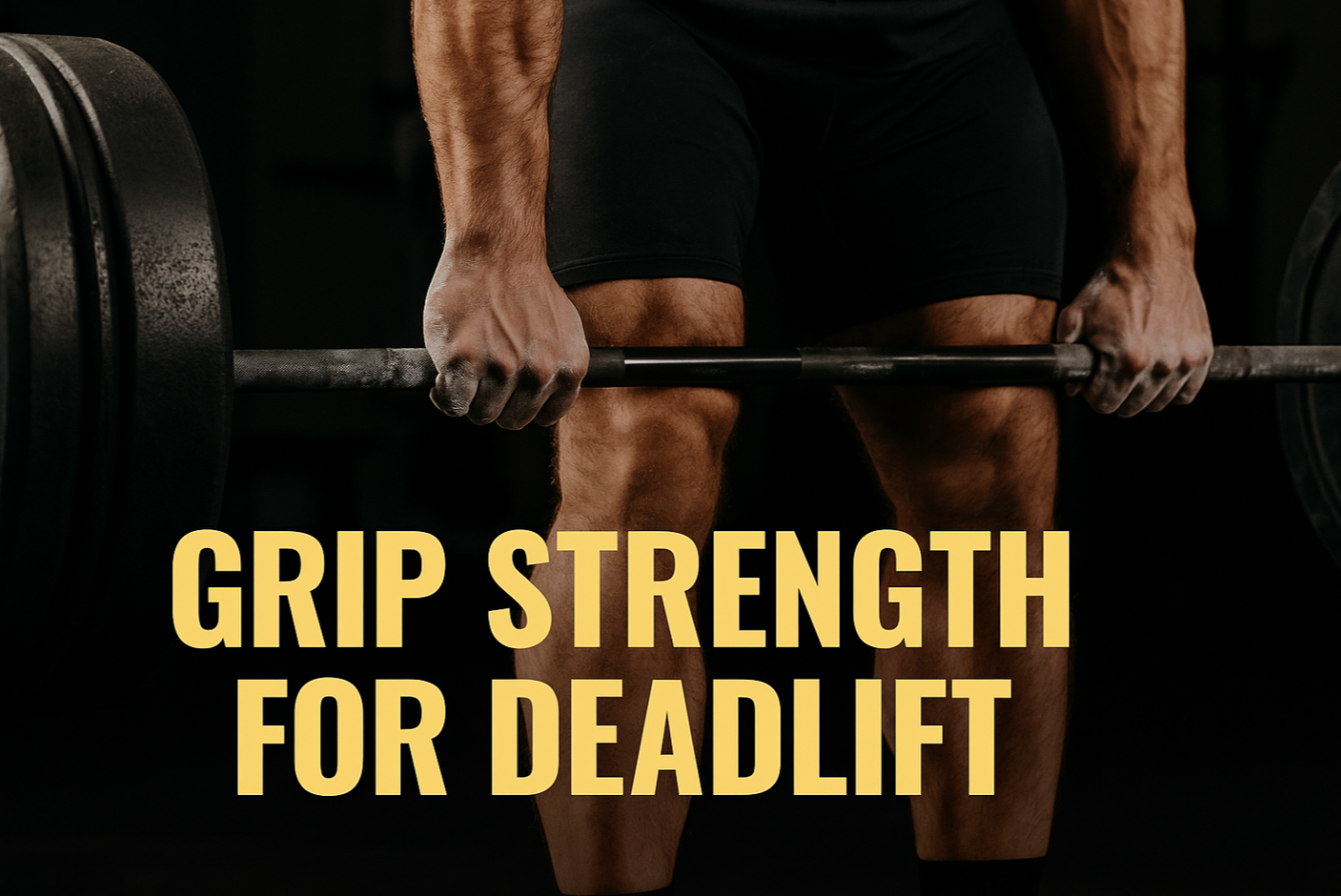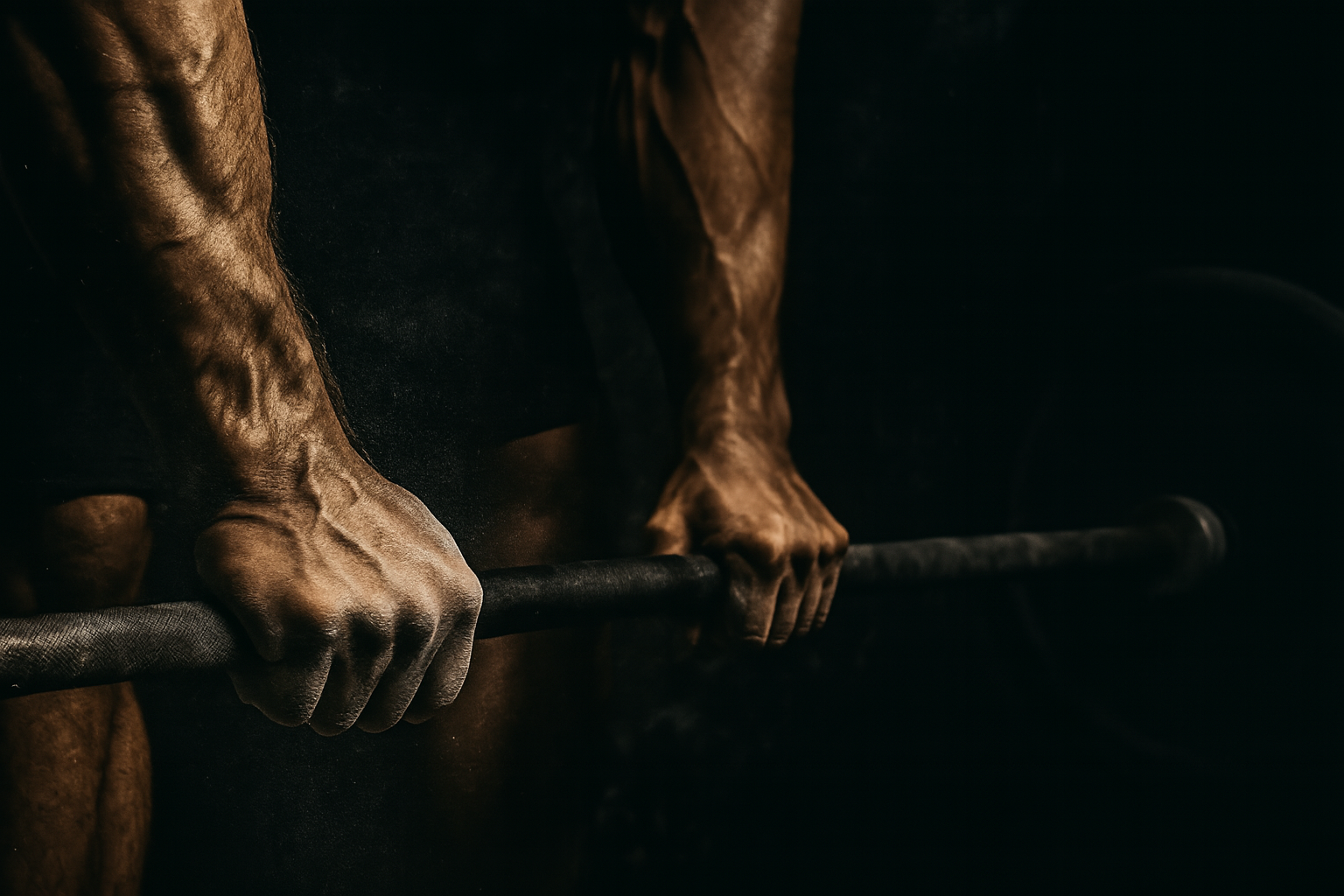Grip Strength for Deadlift: How to Progress from Junior to Expert + Legendary Grip-Boosted Deadlifts
Deadlifts don’t just test your back and legs—they punish your grip. Nail your grip strength, and your numbers explode. Fail your grip, and your deadlift stalls. This guide takes you from a weak junior grip to a deadlift grip beast, with training tips, stages of progress, and stories of legends who lifted bigger thanks to their grip. Let’s crush it.
Why Grip Strength Is a Deadlift Game-Changer
Deadlifting heavy weight means hanging on tight under brutal loads. Your grip is the gatekeeper for progress—fail to hold, and the bar drops. Grip strength doesn’t just improve your hold—it directly impacts your deadlift numbers by allowing you to push harder, longer, and safer.
Strong grip means fewer missed reps, less reliance on straps, and more confidence when pulling max loads. Plus, better grip strength transfers to other lifts like rows, pull-ups, and carries. It’s the foundation of pulling power.
But grip isn’t one thing. It’s crushing strength, supporting endurance, pinch grip, and even hand extensors for balance. Each plays a role in deadlift dominance.
Grip Strength Progression: Junior to Expert
Grip strength doesn’t build overnight. You progress through stages, each with its own focus and challenges. Here’s the roadmap:
1. Junior Grip: Build the Base
If your grip fails before your legs or back, you’re at the junior stage. You’ll drop the bar during heavier sets or longer holds. Fix this by training crushing grip and supporting grip endurance. Start simple.
- Focus on hand grippers and dead hangs.
- Include wrist curls and reverse curls to strengthen forearms.
- Practice consistent, controlled holds on the bar.
Don’t rush. Build volume gradually to avoid tendon pain.
2. Mid-Level Grip: Grip Endurance & Thickness
At this point, you can hold heavy bars, but fatigue creeps in on longer sets or heavy doubles/triples. Now, build grip endurance and thicker forearms that lock the bar like steel.
- Add farmer’s walks, pinch holds, and wrist rollers.
- Use thick bars or thick grips to overload hand stabilizers.
- Introduce varied grip positions (hook, mixed, double overhand).
This phase increases grip durability for grinding out reps under fatigue.
3. Expert Grip: Maximal Crushing & Supporting Grip
Expert-level grip means the bar stays glued to your hands no matter what. You’ll crush heavy singles and reps without straps, and your grip won’t gas out. You train grip like a muscle—with intensity, progression, and variety.
- Max effort closes on heavy grippers (e.g., 200+ lbs resistance).
- Weighted dead hangs and one-arm hangs.
- Specialized equipment like wrist rollers, pinch blocks, and lever-based pronation/supination tools.
- Training hand extension to keep muscles balanced and prevent injury.
Expert grip training demands serious work but pays off in raw pulling power and injury resistance.
Grip Training Methods to Build Iron Hands
Grip training must be systematic. Here's how to build it:
Crushing Grip
Use hand grippers or thick handles to train the ability to close your hand hard. Work sets of 6–12 reps to build max force and endurance. Try max-effort closes or high-rep holds.
Supporting Grip
Dead hangs, farmer’s walks, and carrying heavy implements test your hold under load for time. Train with 20–60 second holds or walks, adding weight progressively.
Pinch Grip
Pinching weight plates or blocks builds thumb and finger strength essential for thicker hands and a more secure grip. Work with holds or lifts focusing on squeezing with fingers and thumb.
Wrist & Forearm Strength
Wrist curls, reverse curls, hammer curls, and wrist rollers develop forearm muscles that keep your grip strong and balanced. Use moderate to high reps with slow eccentrics for muscle growth.
Hand Extension
Balance crushing strength by training hand extensors. Use finger extension bands or rice bucket drills to prevent imbalances and reduce injury risk.
Progressive Overload & Volume
Grip grows with overload—add weight, reps, or time each week. Train grip 2–3 times per week, with around 15–30 minutes per session. Recovery is key; avoid overuse injuries by monitoring pain and soreness.
Essential Tools & Equipment for Grip Gains
- Hand Grippers: For crushing grip training, start with moderate resistance and progress to heavy grippers.
- Wrist Roller: Builds wrist and forearm endurance through rolling heavy loads up and down.
- Farmer’s Walk Handles: Develop supporting grip with loaded carries.
- Pinch Grip Blocks/Weight Plates: For pinch grip training.
- Judo Belt or Lever Tools: Train pronation and supination for wrist stability.
- Finger Extension Bands or Rice Bucket: Strengthen hand extensors and aid recovery.
Invest in quality gear that fits your level and goals. Tools like the Bruce Lee Grip Machine or specialized grip trainers can accelerate advanced gains.
Grip Legends Who Crushed Deadlift PRs
Some lifters didn’t just rely on brute force—they owned their grip. Here are legends who prove grip strength powers deadlift greatness:
Ed Coan
The GOAT of powerlifting was notorious for his rock-solid grip. Ed trained grip hard, rarely used straps, and maxed out deadlifts over 900 lbs. His crushing and supporting grip were as legendary as his technique.
Magnus Samuelsson
Strongman and deadlift beast, Magnus combined raw pulling power with an iron grip honed from years of heavy carries and gripper work. His grip endurance helped him lock heavy bars when others failed.
Benedikt Magnússon
Deadlift world record holder known for crushing grip and no straps. Benedikt’s grip training included grippers and thick bar holds, enabling him to pull 1,015 lbs raw.
Dave Tate
Powerlifting coach and lifter, Dave talks extensively about grip’s importance. His programs emphasize grip work to break deadlift plateaus.
Devon Larratt (Armwrestling Legend)
Though an armwrestler, Larratt’s grip strength and forearm pronation power show how serious grip work boosts pulling strength. His massive pronator teres is a grip powerhouse.
These lifters didn’t neglect grip. They treated it as a pillar of their deadlift. You can too.
Grip Strength Training FAQ
How long until I see grip strength improvements?
Beginners often notice better grip in 4–6 weeks with consistent training. Forearm size and endurance follow soon after.
Should I train grip every day?
No. Grip muscles recover quickly but overtraining leads to tendon pain. Aim for 2–3 grip-focused sessions per week.
What grip style is best for deadlifts?
Start with double overhand to build crushing grip. Progress to mixed grip or hook grip for maximal loads once grip is solid.
Are straps a crutch?
Straps protect grip but can limit grip development. Use sparingly and train grip without them to maximize raw pulling power.
How do I avoid grip injuries?
Warm up hands, progress volume gradually, stretch forearms, and balance crushing with hand extension training.
Conclusion: Own Your Grip, Own Your Deadlift
Grip strength is the linchpin of deadlift progress. From junior levels struggling to hold the bar, to expert hands that crush and lock every pull, grip training is non-negotiable. With a clear plan, the right tools, and relentless consistency, you can build a grip that fuels massive deadlift PRs.
Remember the legends who paved the way. They didn’t skip grip work, and neither should you. Chalk up, squeeze tight, and own your deadlift like a beast.



